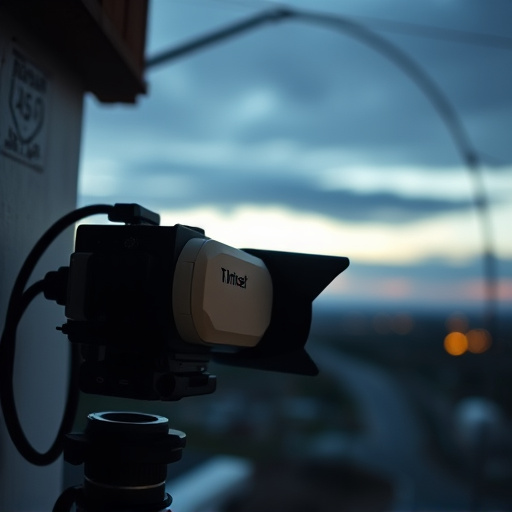Indoor spy cameras with night vision are essential tools for strengthening home security, offering 24/7 monitoring with advanced features like enhanced night vision and motion detection. These discreet systems, consisting of a network of compact cameras connected to a central hub, can be strategically placed for optimal coverage while maintaining an aesthetically pleasing environment. Disguising them as everyday items like fire detectors or light bulbs allows for unobtrusive monitoring. Proper placement at eye level or slightly elevated, behind objects, and within decorative items ensures comprehensive view without drawing attention.
“Enhance your home’s security with our comprehensive guide to masking household objects in indoor spy camera systems featuring night vision. Understanding the intricacies of these systems is key to effective surveillance. This tutorial delves into the process of concealing common items, ensuring optimal coverage without raising suspicion. From selecting the right cameras to strategic placement tips, we equip you with knowledge for a robust security network. Optimize your home’s protection today.”
- Understanding Indoor Security Camera Systems
- The Process of Masking Common Household Objects
- Tips and Precautions for Effective Camera Placement
Understanding Indoor Security Camera Systems
Security camera systems designed for indoor spaces play a pivotal role in enhancing home security and peace of mind. These discreet devices, often referred to as indoor spy cameras with night vision, are strategically placed to monitor various areas within a residence, offering round-the-clock surveillance. Unlike their outdoor counterparts, indoor cameras operate in a controlled environment, allowing for more sophisticated features like enhanced night vision capabilities, motion detection, and advanced recording options.
Understanding how these systems work is crucial when considering implementation. Most indoor security camera setups comprise a network of small, compact cameras connected to a central hub or recording device. These cameras utilize infrared technology for clear images in low-light conditions, ensuring continuous surveillance even during the night. Motion sensors further enhance their effectiveness, triggering recordings only when activity is detected, thereby conserving storage space and battery life.
The Process of Masking Common Household Objects
Masking common household objects with an indoor spy camera equipped with night vision is a simple process that involves strategic placement and creative coverage. The first step is to identify areas within your home where you want to hide the camera, such as behind picture frames, potted plants, or decorative items. These locations offer natural cover, making it less likely for residents or visitors to spot the device. Once these spots are chosen, you’ll need to acquire appropriate masking materials like adhesive-backed foam, fabric, or custom-cut covers designed to match your home’s décor.
Next, carefully attach or place the mask over the camera, ensuring it blends seamlessly with its surroundings. For instance, a small, round indoor spy camera can be disguised as a fire detector or a light bulb. With night vision capabilities, these cameras can capture clear images even in low-light conditions, enhancing their effectiveness. Remember, the key to successful masking is subtlety and attention to detail, allowing you to monitor your home’s activities discreetly while maintaining an aesthetically pleasing environment.
Tips and Precautions for Effective Camera Placement
When setting up security cameras, especially indoor spy cameras with night vision, strategic placement is key. Aim to cover common entry points like doors and windows while also monitoring high-traffic areas within your home. Positioning them at eye level or slightly elevated ensures a comprehensive view, making it harder for intruders to spot or manipulate the camera.
Remember, discretion is vital; avoid placing cameras in obvious locations. Mount them behind objects like picture frames or inside decorative items to maintain an aesthetically pleasing environment. Additionally, consider using infrared technology for night vision to minimize disruption and ensure your indoor spy camera offers crystal-clear images around the clock without drawing unnecessary attention.
Transform your home’s security with an indoor spy camera featuring night vision. By mastering the art of masking common household objects, you can ensure effective surveillance while maintaining a serene living environment. This tutorial has guided you through understanding indoor camera systems, the masking process, and best practices for optimal placement. Remember to prioritize privacy, position cameras strategically, and adapt these techniques to your unique home setup. Stay vigilant, stay safe!
